How To Prevent Blisters While Hiking
To prevent blisters while hiking, it is essential to incorporate proper footwear, moisture management, and good foot care into your routine.
Hiking adventures can be an exhilarating experience, connecting you with nature and providing a sense of accomplishment. However, the joy of the journey can quickly be dampened if blisters start to form on your feet. Blisters, caused by friction between your skin and footwear, are a common woe for hikers. Fortunately, with a proactive approach to foot care and some thoughtful gear choices, you can significantly reduce the likelihood of developing blisters and ensure that your hiking experience remains focused on the breathtaking landscapes rather than the discomfort in your shoes.
From selecting the right footwear to employing proper lacing techniques and maintaining foot hygiene, a few simple precautions can go a long way in preventing blisters and enhancing the overall enjoyment of your hiking expedition.
#1 Tape:
Duct tape seems to work best. Cut tape to desired length, apply to relaxed foot. Not too low or not too high as this may cause friction wear you don’t want it. Add tape to any problem area before you head out on the trails.
I like to cover my ankle bone as it seems to rub when I least expect it, however once my boots feel good and broke in it may no longer be needed to tape them.
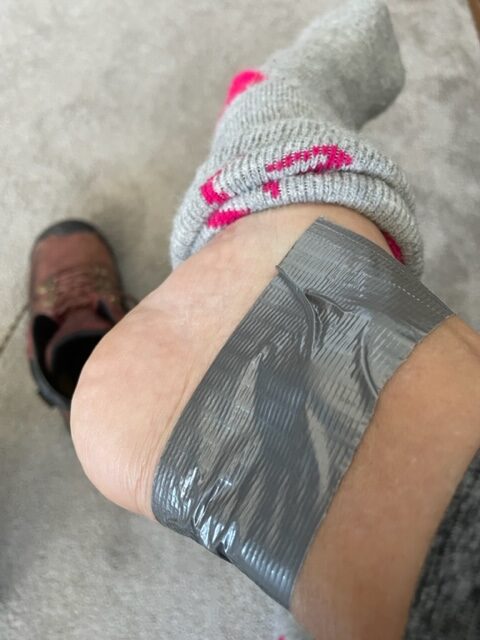
#2 Bandage:
Large adhesive bandages work great as well however can be costly. I keep them handy in my backpack and used more for blisters if taping wasn’t done.
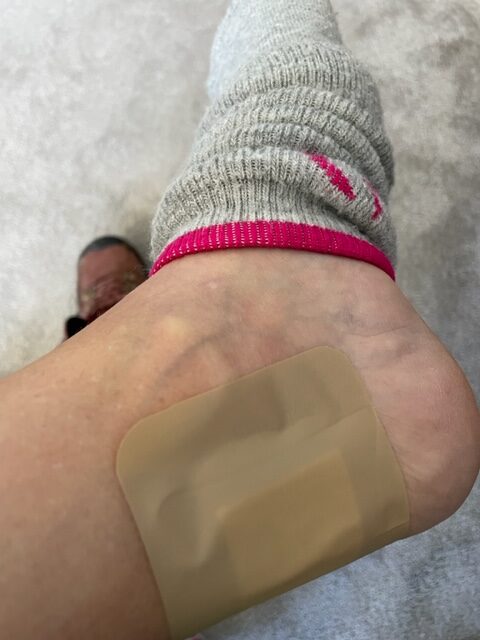
#3 Lacing:
Experiment with different lacing techniques to find what works best for your foot shape and hiking conditions. There are 3
- Surgeon’s Knot- Keeps heels secure as well as other areas of the foot. Keeps laces from loosening as well. Used in any area of the boot.
- Window or Gap Lacing – used to loosen pressure points that are causing irritation. This can be in the upper arch or in the toes. To relieve pressure on the toes start by re-lacing and skipping the first or second eyelet to take the pressure off.
- Heel Lock – Stops the heel from slipping, keeping it in place.
- Double Bow Knot – keeps lace from coming untied. Better than a double knot. This is done by two loops, one over, one under and pull tight.
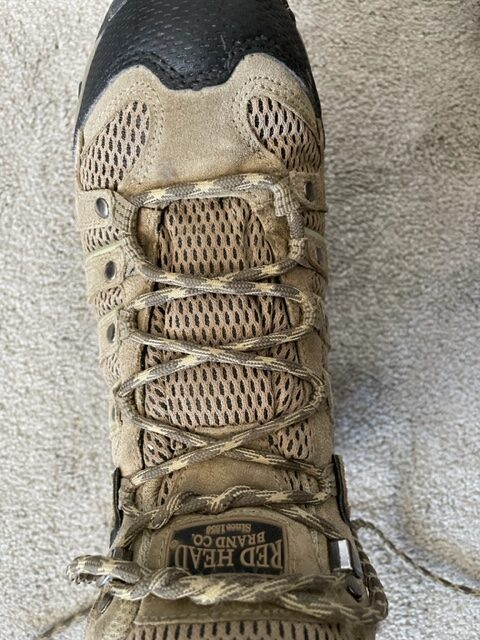
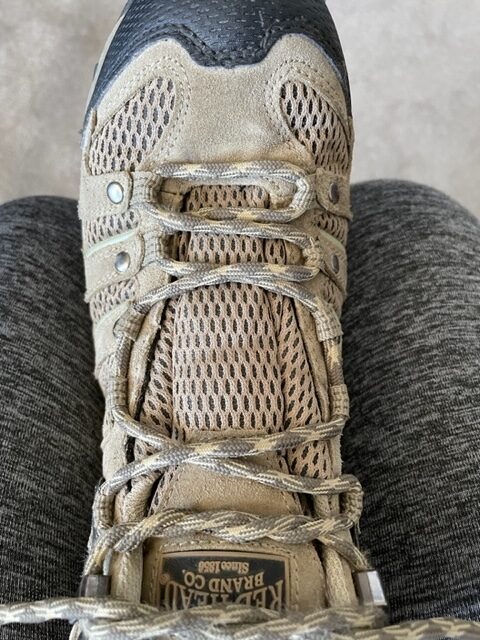
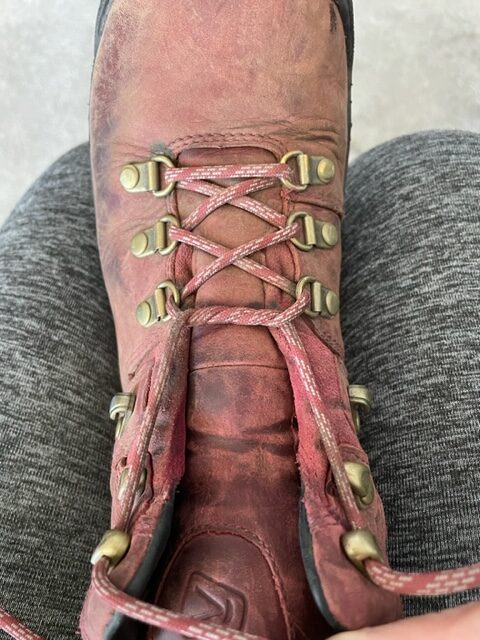
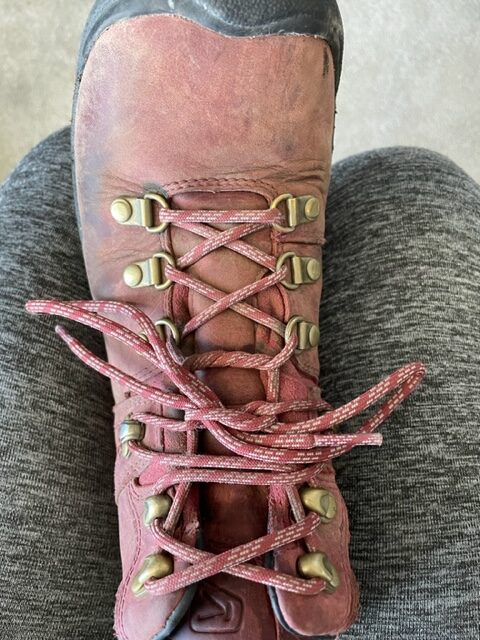
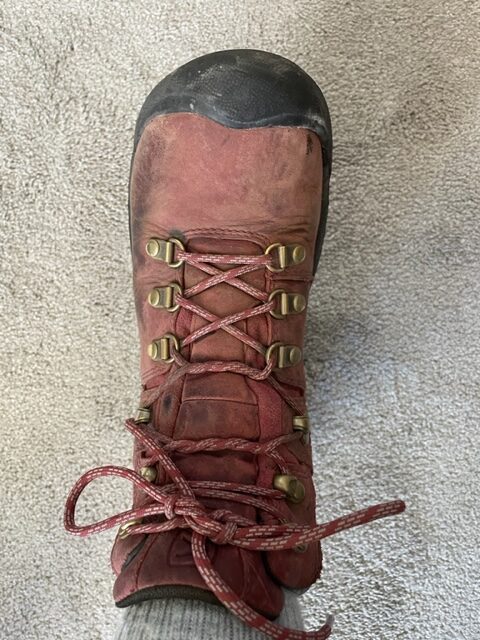
#4 Footwear:
Good footwear is a must especially on the trails. A well fitted boot with moisture-wicking and breathable materials is key to a happy foot. Wear them as much as possible to break them in before your big adventure. Issues may or may not arise but its important to prepare in case. Taping can help prevent unexpected issues.
#5 Socks:
Wear moisture-wicking or moisture-resistant socks to keep your feet dry. Look for socks made of materials like merino wool or synthetic fibers designed to wick away moisture. Two pair of socks can work as well with a light inner and a heavier outer sock.
- Merino – Size XS-XL, 80% Merino Wool, 15% Polyester, 4% Nylon, 1% Spandex, moisture control, reinforced toe, arch support, extra cushioning.
- Darn Tough – Men, Women
- Sock Liner – Men, Women
- Silverlight – Silverlight technology. 40% Nylon, 53% New Zealand Merino Wool, 5% Silver Yarn, 2% Spandex.
#6 Foot Care:
Before hiking make sure you do some foot care by trimming toe nails even or shorter than skin to prevent bumping which causes toe damage and blisters.
#7 Stop:
It’s essential to listen to your body and address any discomfort promptly to prevent more serious issues. First sign of soreness or excessive friction on an area, STOP and apply bandage or tape and or adjust laces.
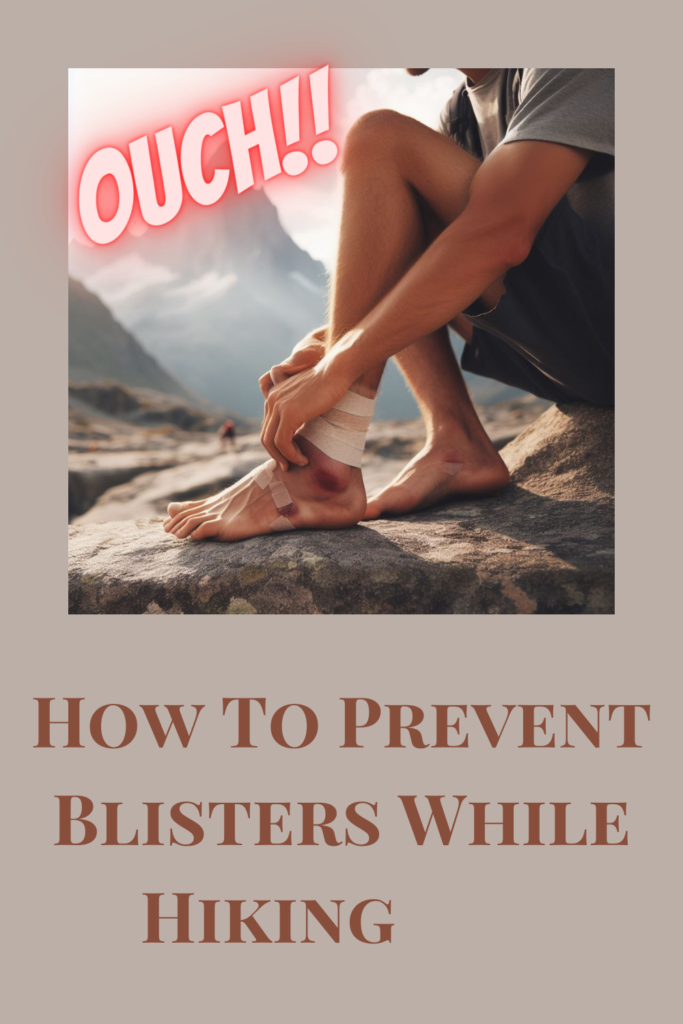

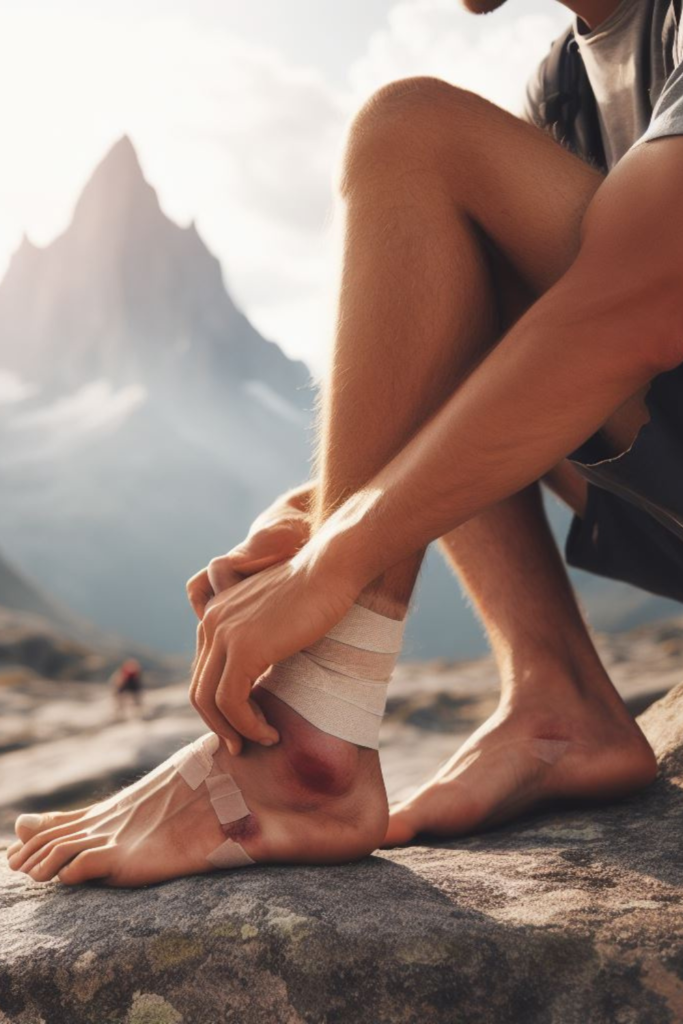






I never knew that about the duct tape! Thank you for sharing!
It my life saver. lol